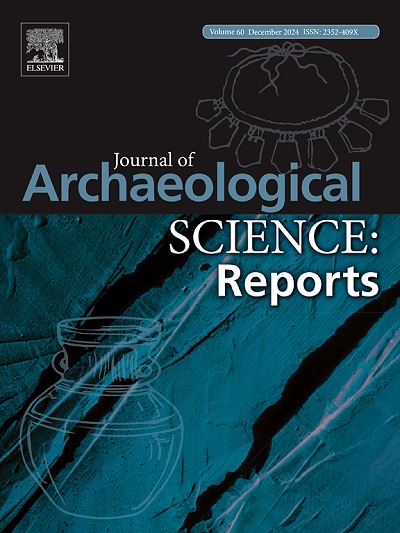大锅看起来很像——以色列早期君主制时期(公元前10 -9世纪晚期)大批量生产标准化储罐的社会和政治方面
IF 1.5
2区 历史学
0 ARCHAEOLOGY
引用次数: 0
摘要
在考古记录中确定生产单位和独特的知识社区是一项复杂的挑战。然而,创新的3D方法、先进的形状分析和来源研究的新组合可以在最终产品中检测出一致、可重复和稳定的特征。利用客观的工具来追踪这些一致的参数对于在他们的社区中发现陶工的签名至关重要。这项研究的重点是一种独特的陶瓷类型,河马罐,主要发现于铁器时代晚期(公元前10 - 9世纪晚期),在黎凡特南部的北部山谷(主要在耶斯列和以色列的Beth-Shean山谷)。研究表明,这些罐子的广泛生产与以色列王国的系统控制之间存在联系,表明了协调的制造努力。河马石罐的生产和销售为了解该地区的社会经济和政治组织提供了宝贵的见解,特别是关于集中的行政监督和贸易网络。在景观和场地单位尺度上检查河马罐,可以区分生产单位,揭示结构化和分层的制造系统。研究结果表明,这些罐子是在一个集中的框架下在数量有限的车间生产的。此外,它们突出了训练有素的陶工在统一的社会结构中工作的作用,促进了熟练工匠从中央生产中心到行政前哨的部署。本文章由计算机程序翻译,如有差异,请以英文原文为准。
Great pots look alike – social and political aspects of mass production of standardized storage jars in early monarchic Israel (late 10th-9th century BCE)
Identifying production units and distinct knowledge communities in the archaeological record is a complex challenge. However, the novel combination of innovative 3D methodologies, advanced shape analysis, and provenance studies enable the detection of consistent, repeatable, and stable characteristics in final products. Utilizing objective tools to trace these consistent parameters is crucial for uncovering the potters’ signatures within their communities.
This study focuses on a distinctive ceramic type, the Hippo Jar, primarily found in the northern valleys of the southern Levant (mainly in the Jezreel, and Beth-Shean Valleys, Israel) during the late Iron Age IIA (late 10th–9th century BCE). The research suggests a link between the widespread production of these jars and the systemic control of the Kingdom of Israel, indicating a coordinated manufacturing effort. The production and distribution of Hippo Jars offer valuable insights into the region’s socio-economic and political organization, particularly regarding centralized administrative oversight and trade networks. Examining Hippo Jars at both landscape and site-unit scales allow for the distinction of production units, revealing a structured and hierarchical manufacturing system. The findings suggest that these jars were produced in a limited number of workshops operating under a centralized framework. Additionally, they highlight the role of trained potters working within a unified social structure, facilitating the deployment of skilled artisans from a central production hub to administrative outposts.
求助全文
通过发布文献求助,成功后即可免费获取论文全文。
去求助
来源期刊

Journal of Archaeological Science-Reports
ARCHAEOLOGY-
CiteScore
3.10
自引率
12.50%
发文量
405
期刊介绍:
Journal of Archaeological Science: Reports is aimed at archaeologists and scientists engaged with the application of scientific techniques and methodologies to all areas of archaeology. The journal focuses on the results of the application of scientific methods to archaeological problems and debates. It will provide a forum for reviews and scientific debate of issues in scientific archaeology and their impact in the wider subject. Journal of Archaeological Science: Reports will publish papers of excellent archaeological science, with regional or wider interest. This will include case studies, reviews and short papers where an established scientific technique sheds light on archaeological questions and debates.
 求助内容:
求助内容: 应助结果提醒方式:
应助结果提醒方式:


